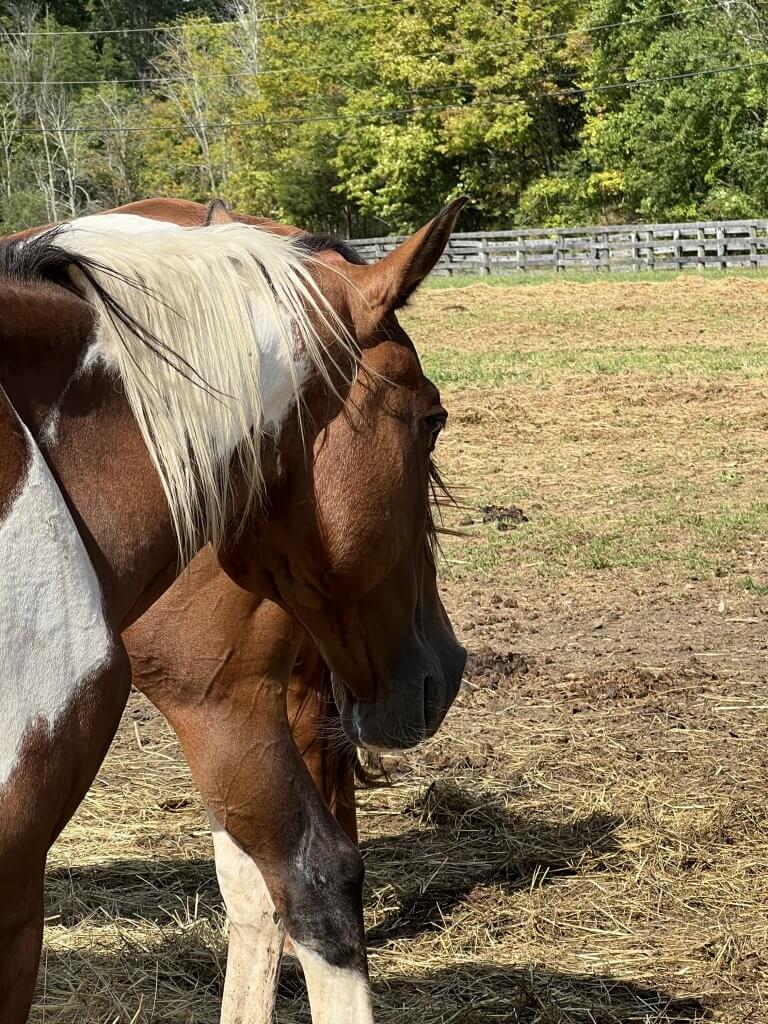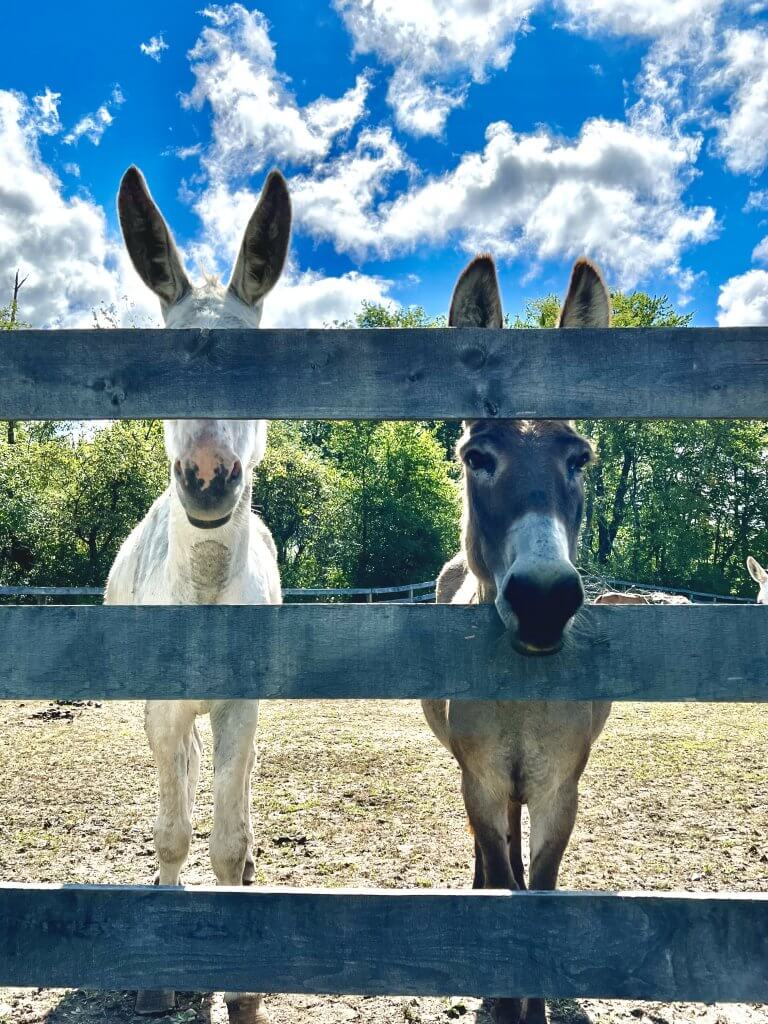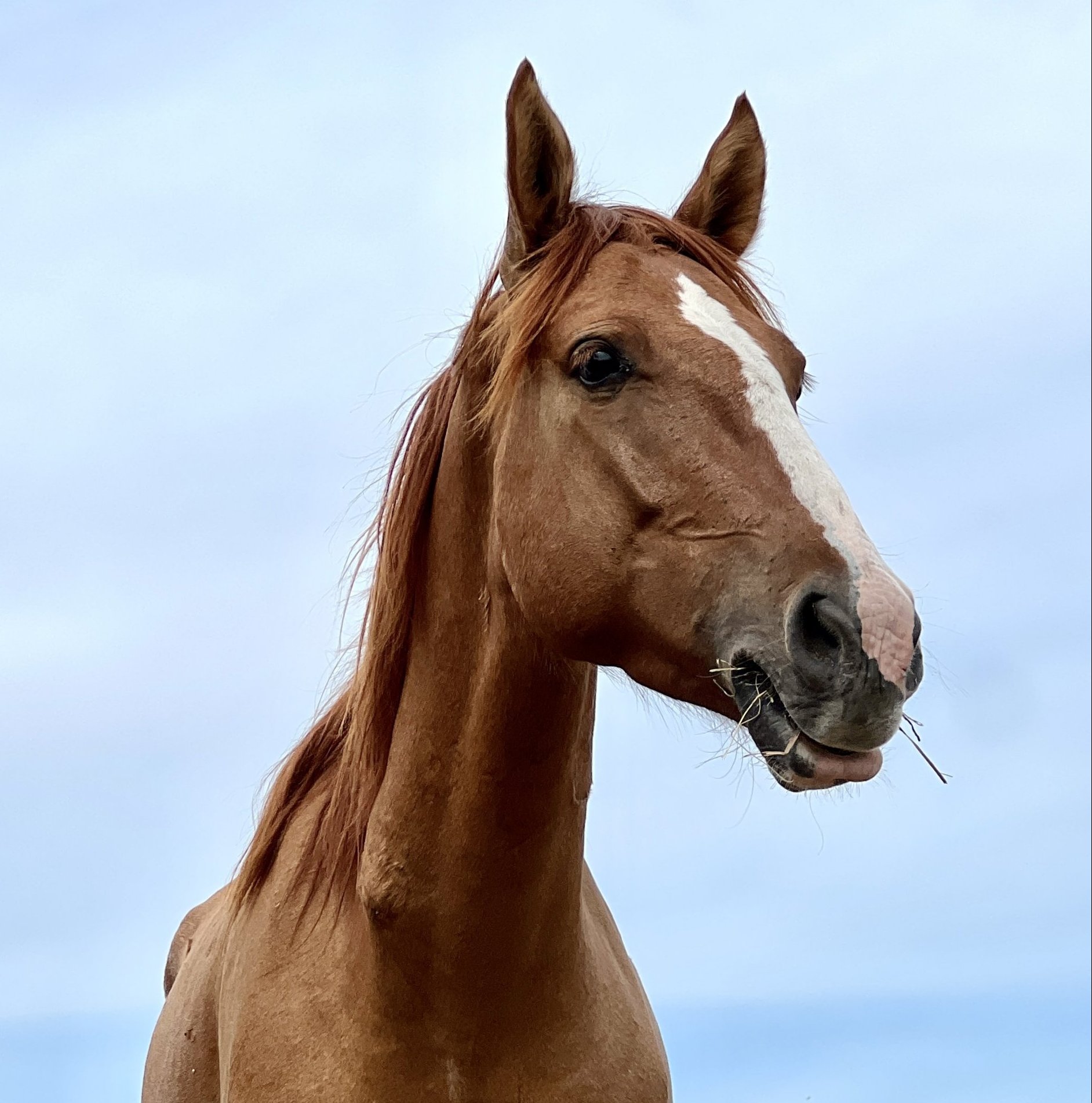Hi Everyone,
I hope this post finds you in good health and enjoying your families — human, equine, canine, feline,…!
The first time I rode a horse on a trail, I was told to listen to my horse. At eight years old, I had trouble making sense of this instruction; after all, the horses didn’t seem to be making any real noise. But when the trail guide elaborated, I began to understand. He explained, “Pay attention to your horse’s ears. His ears will tell you everything.” He continued, “If they’re forward, your horse is happy, but if your horse pins ‘em back, it might mean the horse in back of you has gotten too close.”
While that might have been a giant oversimplification, at the time, it was an important introduction to what would be a lifelong course for me: Horse Language 101. And in the coming years, I would have the very best instructors for that course: the horses themselves.
If you ever have the opportunity to spend time with a herd, to observe the members closely, horses will teach you how they communicate with one another. If a horse is trying to claim the position of leader of the herd, you might see obvious posturing behaviors. This can look very dramatic — think of it as shouting — and it can include biting, pushing around, kicking up and out. However, when there’s an established hierarchy, you might notice that herd members move deftly out of the way when the leader approaches the shelter or the hay pile. You might notice the horses “listening” for a cue to back away, or perhaps for the cue that says it’s okay to stay close.
Often soundlessly, horses communicate, not only with their equine companions, but also with us. They rely on us to deconstruct their language — often delivered in their eyes, nostrils, ears, and tails. A wide eye can mean terror or anger. Forward ears indicate that something has your horse’s attention — but look to see if the nostrils are flared or relaxed. A horse can show attentiveness with two ears forward and a relaxed muzzle, but two ears forward with tense nostrils can mean fear. And sure, ears pinned way back reveal that a horse isn’t pleased, but what about when just one ear is back mid-way? In this position, your horse is listening to what or who is in back, or to a rider if there is one. And what is your horse trying to tell you with a swift tail swish— even when there are no flies around? If you’re listening attentively, you’ll note the horse’s agitation.
The act of listening to horses and learning their language can become natural for us, but it takes time. Even after having my own horse for so many years, I’m still learning. And I’m noting that rescue horses, mules, and donkeys have particular challenges; many have come from situations where their needs haven’t been met, where no one took the time to figure out what they were trying to say. Some rescues find it easier to check out, to give up on the exhausting task of finding someone who will listen.
But I’m hopeful. This is one of the gifts we can give our rescues. We can listen and learn from them. And in turn, we can find ways to let them know they’ve been heard.
Be well!
Karen



